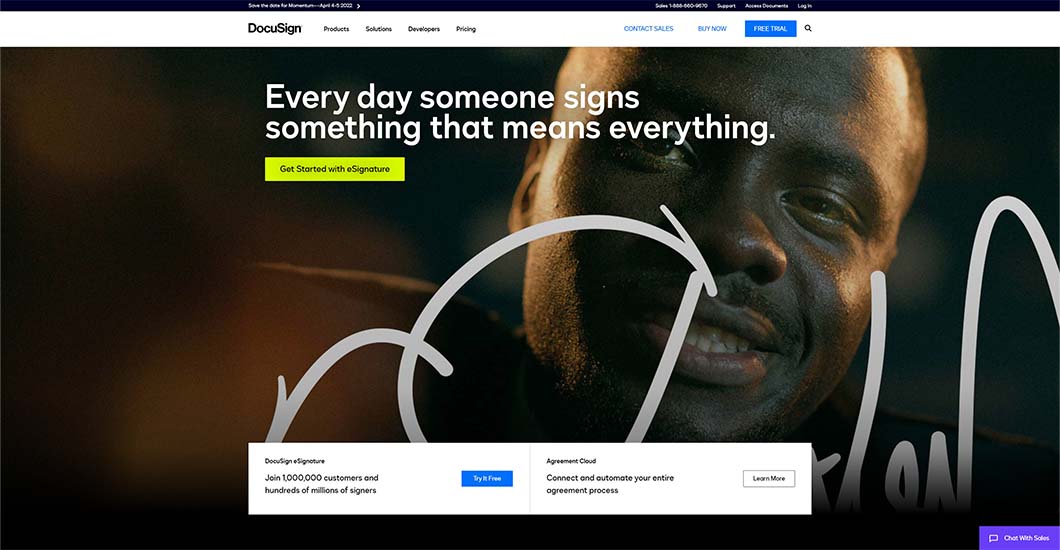The best remote work software solves your project and workforce management challenges. Moreover, its use supports your overall business goals.
Discover 10 work-from-home tools suitable for remote employees and managers.
What Is Remote Work Software?
Remote work software refers to any application accessible to distributed employees. Typically, these are cloud-based software-as-a-service (SaaS) platforms, although larger organizations may deploy custom solutions.
There are several kinds of remote work tools, and many have overlapping features. Your team may already use one or more apps in their everyday workflows.
Virtual platforms for remote teams include:
- Meeting software, such as web or video conferencing apps
- Team communication and collaboration systems for real-time interactions
- Remote security tools, such as virtual private networks (VPNs) and password managers
- Project, task and time management software
- Workforce management platforms for remote monitoring
- Employee engagement and team building apps
- Cloud-based accounting, human resources (HR) and business intelligence software
- Remote employee training and onboarding solutions

How to Choose Remote Working Software
SaaS management platform Productiv’s report, “State of SaaS Sprawl in 2021,” finds the average business with less than 500 employees uses 242 apps.
However, 49% of workers in small organizations use employer-provided tools, suggesting that many business owners pay for apps that employees don’t fully use.
Therefore, it’s vital to identify the specific challenges your new remote tools will solve and get your teams involved in the decision process early.
The best software for remote workers should:
- Support natural interactions between team members and supervisors
- Be user-friendly with a minimal learning curve
- Fit seamlessly and efficiently into workflows
- Integrate with mission-critical tools
- Offer artificial intelligence (AI) and automation features to optimize business processes
- Provide self-service options and live customer support
- Work on iOS, Android, Mac, Windows and Linux devices
- Support multiple browsers, including Safari and Chrome
- Adhere to the latest security standards and publish compliance certifications
- Deliver real-time analytics and insights for supervisors and company owners
- Supply an administrative portal for adding or removing user permissions
10 Work From Home Software Platforms
The best technology for working remotely is cloud-based and budget-friendly, which is why most of the software options below offer free versions.
Our top picks for small businesses are based on personal experience, independent reviews and user ratings.
1. Google Workspace
Google Workspace provides cloud-based office and collaboration tools for remote teams, including free and paid versions.
The free plan is a good fit for small teams wanting to collaborate on documents, share calendars and use team chat spaces. However, it lacks administrative controls and 24/7 customer support.
Choose a paid Google Workspace version for:
- Business email addresses for users and up to 30 aliases per user
- 30 gigabyte (GB) cloud storage per user compared to 15 GB on paid plans
- Video meetings with 100 participants, dial-in numbers and whiteboarding
- Two-step verification methods
- Basic endpoint management, including device reports
- 24/7 phone and email support
The Business Starter plan costs $6 per user per month and is a good fit for most small businesses. Other packages include Business Standard ($12 per month), Business Plus ($18 per month) and Enterprise (custom quote).
The higher-tier plans include polling for video conferences and additional cloud storage. Plus, you can add a Google Voice subscription for voice over internet protocol (VoIP) calling. Explore more features by checking out our Google Workspace review.
2. Microsoft Teams
Microsoft Teams is a virtual workspace and Google competitor offering remote collaboration tools, such as instant messaging and video conferencing, on free and paid plans.
It’s easy to add Microsoft Teams to your technology stack if you already use Microsoft products, such as Word and Excel. But, if your employees aren’t familiar with Microsoft tools, there’s a learning curve. In this case, consider a Microsoft alternative, such as Google Workspace or Zoho Workplace.
The free version comes with 5 GB cloud storage and allows 60-minute video meetings with 100 participants. Historically Microsoft catered to larger enterprises. However, it recently debuted a small business plan called Microsoft Teams Essentials.
This plan increases your video meeting capacity, doubles the cloud storage and offers 24/7 customer support for $4 per user per month.
You’ll need a higher-tier plan to access integrations, custom email, single sign-on (SSO) and administrative controls. Unlike Google, Microsoft requires annual prepayment and doesn’t offer month-to-month plans.
Microsoft 365 Business Basic costs $5 per user per month and goes up to $6 on March 1, 2022. Microsoft 365 Business Standard is $12.50, and Microsoft 365 Business Premium costs $20 (and increases to $22 in March).
3. Trello
Trello is a product from Australian software company Atlassian and an excellent tool for organizing and overseeing projects remotely. It resembles a bulletin board for Kanban-style project management so that users can create individual and shared spaces.
All versions, including the free plan, can automate basic tasks. For instance, if a due date passes, you can set up Trello to automatically add a red label to the card and leave a comment requesting a status update.
Trello’s interface is straightforward, and most users can jump right in without training. The free plan is more than enough for most small teams.
Paid plans start at $5 per user a month with annual billing or $6 monthly. Other packages include Premium for $10 per month with yearly prepayment or $12.50 monthly and Enterprise for $210 per user per year. These versions increase storage, the number of boards and workflow automation capacities.
While Trello is a popular platform, teams working on complex projects may prefer alternative remote work apps, such as Asana or Basecamp.
4. Slack
Slack is one of the most well-known and user-friendly communication tools for remote workers. Employees can chat, share files or hop on a video call easily.
Companies often use Slack to replicate in-office conversations using channels for work topics, specific projects or break time spaces.
Many businesses also move their email conversations to Slack, as it’s easier to track conversations, assign tasks or add someone to your discussion. The free version includes 5 GB of storage, 2-factor authentication, 10 integrations and 1-on-1 video calls.
Select the Pro, Business+ or Enterprise Grid packages for:
- Unlimited integrations
- Video conferencing with 15 participants
- 24/7 customer support
- External collaboration options
- Increased file storage
Pro costs $6.67 per user per month with annual billing or $8 when paying monthly. Business+ is $12.50 per month with a yearly prepayment or $15 monthly. Enterprise Grid plans are available with a custom quote.
5. Expensify
Expensify’s free and paid plans are a good choice for remote teams who need to send invoices, pay bills or submit receipts for reimbursement. It offers business, individual and self-employed plans.
The free versions let you track mileage, send funds or receive money through the app. Paid packages start at $5 per user per month with annual billing or $10 monthly, include accounting integrations, and let you approve expenses.
Check out Wave, Zoho Books or FreshBooks if you need cloud-based accounting software with invoicing and expensing capabilities.
6. DocuSign
If you need a solution for onboarding employees or contractors remotely or frequently signing or managing legal documents, DocuSign is the tool for you.
The free version lets you electronically sign an unlimited number of documents and access them from your cloud storage.
Select paid plans for integrating cloud storage drives, audit trails and automated workflows. Prices start at $10 per user monthly with annual billing or $15 monthly.
7. Calendly
Calendly’s free and paid booking software can save your team time if you frequently host meetings or accept online appointments.
The free version integrates with your existing calendar, whether that’s Google, Outlook or iCloud. From there, you can invite clients to choose an available time slot via a custom link and automatically remind them before your meeting time.
Paid Calendly plans start at $8 per user per month with annual prepayment or $10 monthly and include:
- Metrics and reports
- Email support with a 3-hour response time
- Meeting follow-up emails
- Confirmation page customization
8. 1Password
The best telecommuting software provides security features, but your staff must remember dozens or 100s of passwords for their work from home tools.
According to the cybersecurity firm Keeper, 70% of small and mid-size businesses (SMBs) say “that their employees’ passwords have been lost or stolen in the past year.”
1Password simplifies password management and helps protect your business. For $19.95 per month with annual billing, up to 10 team members can generate and store passwords and use them across multiple devices.
Other options for maintaining security for remote workers include LastPass and Dashlane.
9. Canva
Nearly every business uses graphics and videos on websites, social media and brochures or product listings. Canva is the best software for working remotely because it supports internal and external collaboration on creative assets.
All plans let users edit designs, add comments and assign tasks. For $119.99 per year or $12.99 per month, up to 5 employees can use more than 100 million free stock photos and share 100 GB of storage.
Choose the Canva Pro package to:
- Remove backgrounds from images with 1 click
- Upload your brand colors, logos and fonts
- Access 24/7 customer support
- Publish content directly to Facebook, Instagram, Twitter, LinkedIn, Pinterest and Slack
10. Toggl Track
Time trackers help motivate teams and monitor billable hours. Toggl Track is free for up to 5 people, or pricing starts at $9 per user per month with annual billing.
Pick a paid plan to set time estimates for projects, alert teams when they’re near the limit, manage billable rates and labor costs and view tracked time on your calendar.
Toggl Track integrates with 100s of applications and lets you:
- Manually or automatically track your time
- Detect idle time
- Set a Pomodoro timer
- Export time reports
While Toggl is great for individuals and teams, if you need to maintain employee timesheets consider Clockify.
Use Remote Work Tools to Increase Productivity
Staying focused and in the loop without compromising security is vital for distributed teams.
Pick the right mix of remote work software to keep your teams connected and engaged.











